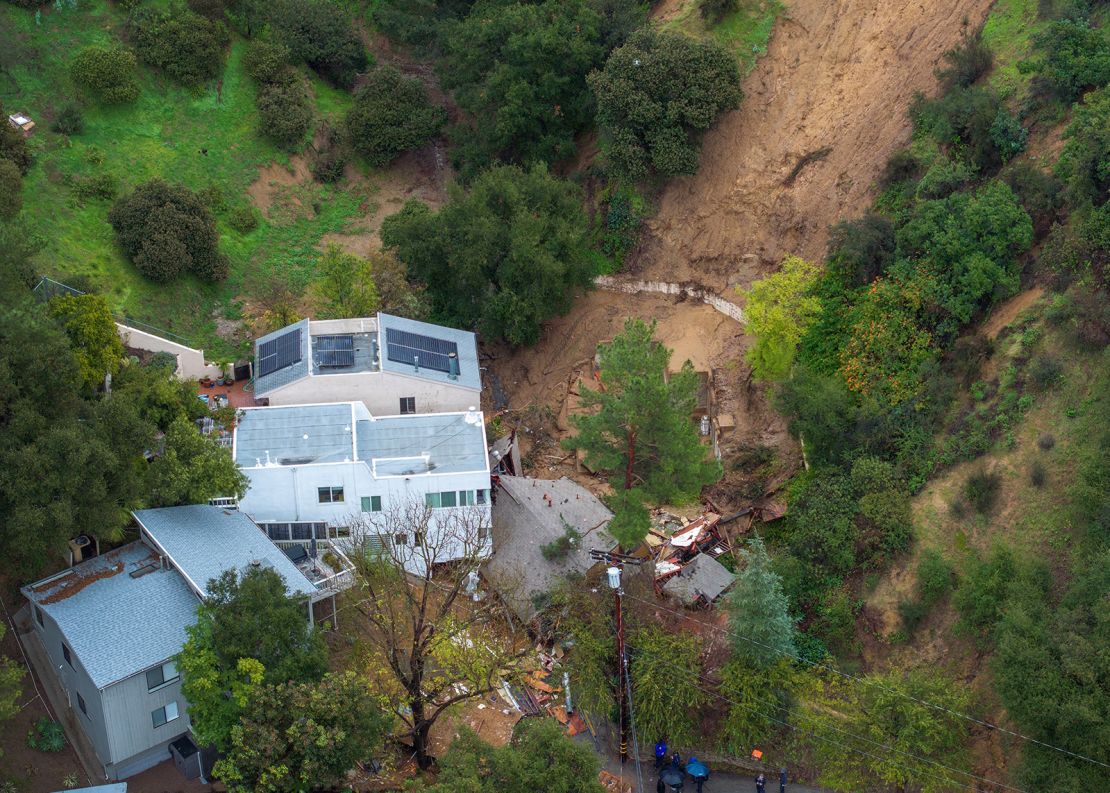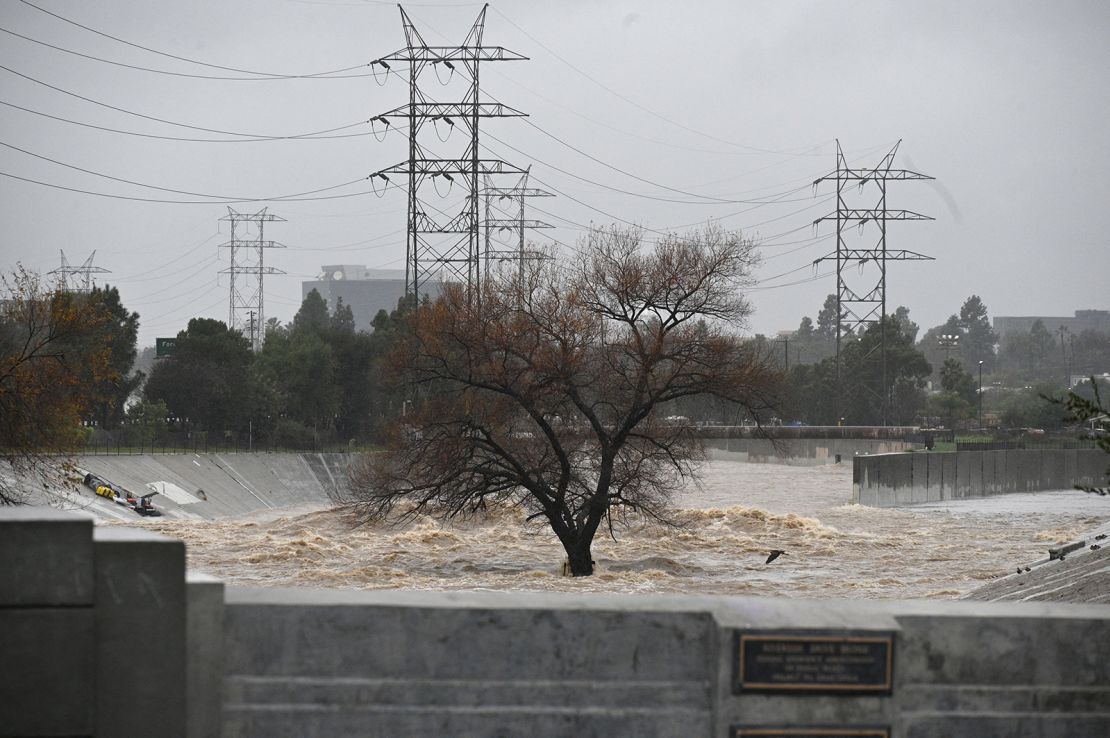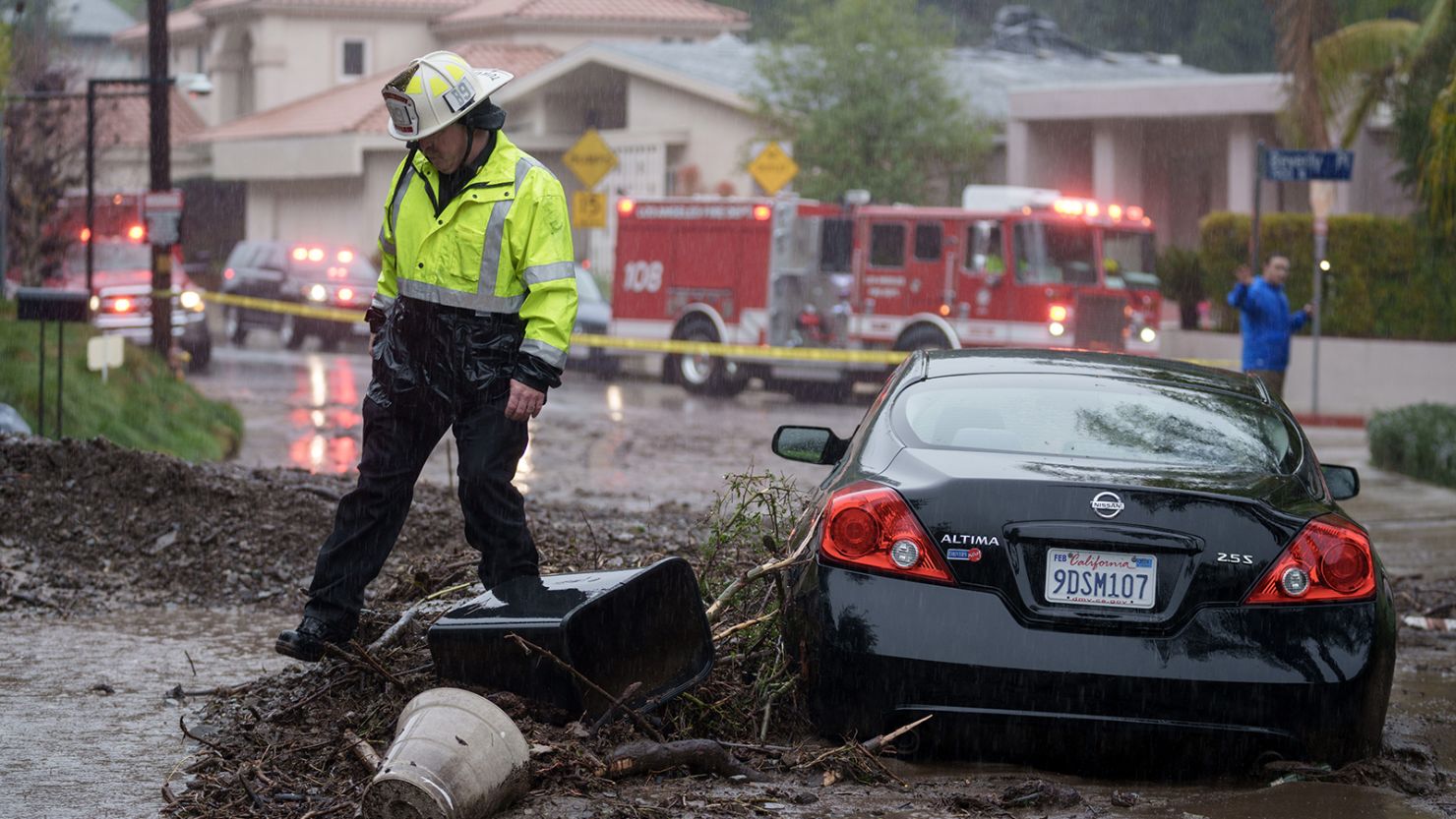Story highlights
At least three killed in Califonria
Flash flooding threat expands to parts of Arizona, Nevada and Utah
Neighborhoods slammed by flooding and mudslides
Los Angeles Mayor Karen Bass declared an emergency Monday
A powerful storm system has drenched parts of California, leaving at least nine people dead, knocking out power and prompting dangerous mudslides and rivers of debris stretching across neighborhoods. The rain – and in some areas, the heavy snow – is slowly wrapping up, but some threats remain. Here’s what’s happening:
• More rain and snow: Showers and occasional bouts of steady rain will continue across Southern California Tuesday. An additional inch of rain is possible for valley areas with 1 to 3 inches in the foothills. Since Sunday, some areas in Los Angeles County have seen nearly 1 foot of rain. Rain also expanded east Tuesday into western Arizona, southern Nevada and southwestern Utah, raising the risk of flash flooding. A Level 2 of 4 risk of excessive rainfall is in effect Tuesday for these areas, according to the Weather Prediction Center.
• At least 475 mudslides in Los Angeles: Authorities in Los Angeles reported at least 475 mudslides during the storm. While the worst of the downpours are over, the continuing rain Tuesday means more floods and mudslides are still possible and roads remain littered with trees and debris. Officials in Southern California have urged anyone who ventures outside to do so with extreme caution.
• At least nine people killed: Nine weather-related deaths have been recorded in California during the powerful storms, the state’s Office of Emergency Management said. At least four of the people killed were struck by falling trees in areas experiencing gusty winds, according to local officials.
• Snow makes travel next to impossible: The storm system also dumped heavy snow, burying parts of the Sierra Nevada and Southern California’s mountain ranges. The snow and strong winds will continue to make for “near impossible” travel conditions at high elevations from the southern parts of the Sierra Nevada to the central Nevada mountains into Tuesday night, the weather service said. The heavy snow will spread further inland this week, reaching higher elevations in Utah, Idaho, Wyoming, Colorado and New Mexico, the service said.
• Thousands still without power: Around 70,000 customers across California were without power Wednesday morning, according to poweroutage.us, particularly in the northern and coastal parts of the state, where violent winds knocked down trees and power lines over the weekend.

At least 475 mudslides and two dozen buildings damaged in Los Angeles
Across Southern California Monday, neighborhood streets turned into muddy, gushing rivers that swallowed cars, washed away debris and left people and animals stranded.
Scott Toro, a resident of Studio City in Los Angeles, told CNN a violent mudslide in his neighborhood scattered neighbors’ cars and left their street completely impassable, littered with large boulders and tree branches. Two of his neighbors’ homes sustained damage, Toro told CNN.
“Everybody seems to be OK, I mean, I think we’re all just mentally shaken, but we’re physically, we’re all okay,” he told CNN, later adding: “We’ve been here 21 years and we’ve never seen anything (like this).”
In Los Angeles, Mayor Karen Bass declared an emergency Monday after the storm dropped nearly 1 foot of water in some areas, triggering mudslides, evacuations and rescues.
The city responded to 475 mudslides, 390 fallen trees, multiple water rescues and increased traffic collisions, Los Angeles Fire Department Chief Kristin Crowley said Tuesday.
Officials were also investigating whether 35 structures that were damaged in the storm are safe. At least five have been “red tagged,” meaning they are not allowing re-entry. Seven were tagged as “yellow,” meaning occupants could go in to collect belongings.
Crews are working to clear and repair roads that were impacted.
“As the storm continues, there are many water-soaked hillsides that have the potential to slide,” Crowley said Monday. “We would like to reiterate to use extreme caution if you live or travel in these areas.”
Two evacuation orders remained in place Tuesday – one at the Owen Fire burn scar in Topanga Canyon and one at the Agua Fire burn scar near Acton.
Though the damage officials saw was not as significant as what they had prepared for, the storm was like “a thousand cuts,” Los Angeles County Board of Supervisors Chair Lindsey Horvath said.
“Sinkholes, downed trees (and) areas of erosion,” she said. “But we are doing well and our crews remain out.”

Nearly half a year’s worth of rain in two days
December through March are the wettest months of the year for Southern California, but the scale of this week’s deluge was highly unusual.
Record-breaking rain was recorded across Southern California on Sunday and Monday. Some of the most jaw-dropping totals unfolded across the greater Los Angeles area.
Downtown Los Angeles had its third-wettest two-day stretch on record Sunday through Monday, receiving 7.03 inches of rain, or 49% of its average yearly rainfall. New daily record rainfall amounts were set on both days when 4.10 inches and 2.93 inches fell, respectively.
Downtown Los Angeles has picked up 10.77 inches of rain since January 1 – 75% of the city’s yearly rainfall in just five weeks.
A few areas of Los Angeles outside of downtown picked up even more rain. Two-day rainfall totals in the city’s Bel Air neighborhood fell just shy of a foot.
Los Angeles was not the only city that saw record-breaking rainfall this week. Nearby Long Beach smashed its daily record rainfall amounts both Sunday and Monday while Santa Barbara eclipsed its daily record Sunday.
CNN’s Taylor Ward, Taylor Romine, Robert Shackelford, and Stephanie Elam contributed to this report.



